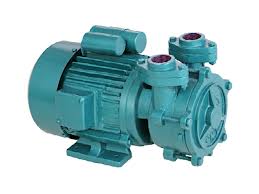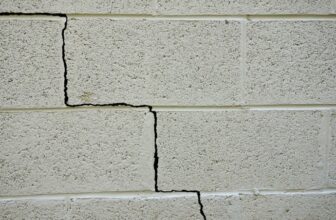
In the exciting world of mining pumps, self-priming pumps are one of the most popular kinds of pumps for sale on the market today. But how do these paragons of pumping action work? Because a self-priming pump is a kind of centrifugal pump we must first understand the basics of how a centrifugal pump works.
How The Standard Centrifugal Pump Works
While there are a variety of standard centrifugal mining pumps, they all work on the same basic principle. When the impeller, which is the rotor inside the pump, is immersed in water it works to increase the pressure of the water, causing it to be pushed out of the pump.
What’s the Problem With Standard Pumps
Unfortunately the main problem with standard mining pumps is that air can be a big problem for them. The blades of the impeller move much slower than would be necessary to pump air out of the system, so when the impeller encounters air it is unable to move the air and stops, which is known as becoming “air-bound.” When the pump becomes air-bound, it stops pumping water out.
The only way to fix the issue is to somehow remove the air keeping the pump from working properly, which can prove to be not only difficult to do but also time consuming depending on the pump’s configuration. This is known as “priming” the pump.
Often this involves having someone use a series of foot valves and ejector pumps to manually create an air and water mixture which is cycled through the pump until it removes all of the air. This can be a time consuming process for the pump operator.
A Self-Priming Primer
What makes self-priming mining pumps so special that they don’t need to go through the priming process then? In short, a self-priming pump mixes air along with the water, allowing the pump to move it much like pure water.
The self-priming pump initially allows air in to mix with water at the impeller. This air and water mixture are discharged into the pump’s water reservoir and, since air is naturally heavier than water the two separate with the water sinking and the air rising and evacuating the chamber. The water sinks down into the impeller chamber, mixing with more air coming down the suction line.
Eventually, there is no more air to process and a vacuum is created. At this point, atmospheric pressure takes over and pumping begins just like in a standard centrifugal pump.
Once the pump primes itself, the water stops recirculating. The next time the pump is turned on, it will self-prime, beginning the process over again and mixing water and air. Self-priming mining pumps have a water reservoir that it uses to rid the suction line and the pump of air by recirculating the water. Normally this reservoir can be found in front of the impeller or above it.
As you might be able to guess, a self-priming pump requires water in order to function. Without the water to mix with the air, the pump will not create the necessary vacuum and will not function at all. This means that these mining pumps need careful maintenance to make sure that they have an appropriate amount of water to enable the priming.
If there is no, or too little, water in the priming chamber or in the pump itself some will need to be added. In other words, a self-priming pump will not literally create a vacuum, and attempting to operate one of these machines without water in the casing is a dangerous proposition and can lead to permanent damage of the mining pump and a waste of money.
Of course, you should always be safe and make sure that the mining pumps’ owners manuals and safety information is read, understood and followed before operating the pump or any other machinery — lives may depend on it.
While most self-priming mining pumps will likely be used to pump water, self-priming pumps need not only pump water. Some will be used to pump oil, other liquids or less pleasant substances such as sewage. There are other variations on the basic self-priming pump design, such as those with two impellers, different construction materials or ones who use different types of impellers altogether, but they all function under the same basic rules regardless of alternate design or variation.
The Benefit of Self-Priming Pumps
Compared to conventional centrifugal pumps, self-priming pumps often start up quicker and obviously they do not need to be primed. They also tend to stop less often, particularly in situations where the liquid being drained reaches a low point. These facts can lead to more active operating time, lower maintenance costs and a more efficient use of time and equipment.
Allight has one of the world’s broadest ranges of lighting towers, pumps, generators, engines and compressors and have developed our site to help you select the technologies which are most likely to improve the safety, efficiency and productivity of your project. Please visit our site www.allightsykes.com to check out our products or to speak to a representative.




